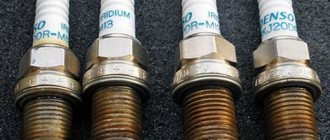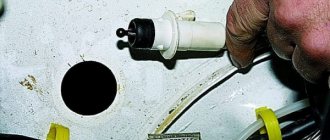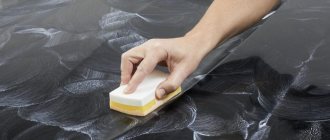Waxing at a self-service car wash is no longer uncommon, but many car enthusiasts still don’t know exactly how to apply wax at a self-service car wash correctly. Some car enthusiasts believe that wax compounds have a negative effect on paint, while others, on the contrary, are delighted with the effect of using this product. The editors of the portal pro-vosk.ru decided to tell their readers about how a car is washed with wax at a self-service car wash. After reading this article, you will feel like a professional. Read the following article on where you will learn exactly how to apply wax at a self-service car wash.
Wax at a self-service car wash
Wax at a self-service car wash is one of the most common means for protecting and beautifying the body.
To maintain the paint layer of a car in proper form, there are a lot of auto chemical products. A certain part of them is used to increase the attractiveness of the appearance, while other copies perform functions to protect the body. Self-service car wash wax is one of the most common means of car body protection and beauty. Below are the types of Car Wax materials for car paint care, as well as methods for applying them.
What to expect from car body waxing:
- Preservation of varnish and paint on the car body.
- If there are minor defects, waxing a car prevents the penetration of moisture and chemical compounds into the metal of the body, thereby preventing the occurrence of corrosion.
- Ensuring protection of paintwork from exposure to ultraviolet radiation.
- Increases gloss and creates a hydrophobic film.
Improving the appearance of the car, wax materials guarantee the unhindered flow of water from its body. This fact eliminates the formation of stains after moisture droplets dry, which simplifies surface cleaning and reduces the number of car wash procedures. The technology itself is somewhat similar to polishing the body of a vehicle.
Application
As mentioned, it is possible to apply all types of wax by hand, with the exception of foam. In any case, before creating the coating, it is necessary to clean the body of dirt by washing. Washing should be done using a non-contact method.
Waxing should not be done in the sun. You must first shake the composition thoroughly. Self-treatment of a car with liquid wax consists of applying it to a body surface that has not dried after washing and rubbing it with a napkin or rag.
It should be noted that liquid wax is often included in the cost of washing or is offered as an additional service at a low cost. However, the feasibility of using this material is questionable, since this service increases the cost of washing, and in order to maintain the effect it is necessary to repeat this operation every time. This explains the low cost of washing a car with this wax, which is 1-2 dollars.
Hard wax car body treatments at car washes range from $12 to $250. This difference in cost compared to liquid wax is explained by more complex application technology. In addition, the materials have a high cost, which can reach $500 per jar of hard wax.
It should be noted that liquid wax and spray versions are much more widespread compared to hard and synthetic wax. This is explained, first of all, by the high cost of applying the latter to the car body. Naturally, such wax is not intended for general use. It is usually used for expensive cars to protect them from damage to the paintwork. Treating cars with such wax on your own is also rarely used, due to the complexity of this process. Washing your car with car shampoo containing wax or applying liquid material is naturally much easier.
Why wax a car at a self-service car wash?
Wax serves to protect the paintwork of a car from external factors. It forms a protective film that protects the car body from minor defects in the form of scratches and cracks.
If the paint coating is damaged by the time of treatment, the wax covers small defects, preventing the penetration of water, salt and other chemically active substances into them, which, acting on unprotected metal, cause damage to it by corrosion, or eliminates them. In other words, wax can be considered as an additional measure to protect your car from rust. In addition, it provides protection from ultraviolet rays.
In addition, wax somewhat improves the appearance, giving the paintwork more shine. By allowing water to drain quickly from the machine, it eliminates the possibility of stains forming as drops dry. Thanks to this, this coating greatly simplifies body cleaning and increases the interval between washes.
Peculiarities
You should choose wax taking into account the cost, since inexpensive options quickly lose their original properties.
New cars under 5 years of age are usually treated with solid and liquid materials. For older cars, abrasive waxes and polishes are used. The difference between wax and polish is that the first material creates an additional protective layer on the surface of the body, while polish improves the external properties by removing the top layer of paintwork. Wax containing abrasives has the same principle of action as polish. Therefore, when choosing wax for your car, you need to take this parameter into account. Abrasive options should be used for cars that have any paint defects, for example, in the form of scratches or faded paint. It must be taken into account that abrasive components vary in degree of hardness. The hardest options resemble grains of sand in appearance and feel.
For new cars that do not have paint defects, wax options that do not contain any abrasive components should be used.
Types of wax at a car wash
The spray is a liquid mixture that is applied by spraying and has low stability (usually washed off after 1-2 washes);
Before talking about how to wash your car with wax at a self-service car wash, you should understand what this coating is. It is a fat-like substance that, when rubbed over the body, forms a thin protective film on its surface. The main classification divides these funds into the following types:
- a spray is a liquid mixture that is applied by spraying and has low stability (usually washed off after 1-2 washes);
- liquid wax has a thicker consistency and is rubbed over the surface of the body with a sponge, due to which it retains its protective properties for 4-5 washes;
- the hard coating is applied to a dry surface, this process is quite labor-intensive, but the protective film remains on the body for 3-4 months.
Car wash waxes can be organic (animal or plant), mineral or synthetic in origin. Artificial coatings are considered the most effective, since the film they form lasts on the surface of the car for six months. Another classification of such products is based on application technology:
Types of Wax Products
The industry produces several types of products designed to protect car paintwork. Each of them is designed for certain technological conditions when coating a car with wax brings maximum effect. For the most part, classification is based on the properties of the material:
The latter type, although simple to apply, is the least acceptable option in terms of effectiveness. Its low resistance to moisture results in the fact that the wax film is washed off after a couple of washes. Therefore, you will have to apply Spray Wax quite often, and this incurs not only time costs, but also financial ones.
The liquid composition is more stable compared to the spray. The essence of the technology is to apply the mixture to washed paintwork and then rub it.
The solid consistency substance differs from other types in that it is applied to a dry surface of the body. The work will take quite a lot of time, but the film will last for at least 3-4 months.
Classification by application technology
Another division of wax products is based on their application method:
- Cold - are liquid formulations that contain cationic active substances and emulsion wax in large quantities. Application is done manually. The main disadvantage: low durability, which forces you to repeat the process after each wash.
- Hot - fat-like substances of natural or artificial origin; carnauba is recognized as one of the high-quality types. The melting point of the material is 90°C, which makes such a car body wax coating difficult to implement at home. This material is expensive, but the film retains its parameters for up to a year.
- Foam - the chemical composition is similar to hot substances, but differs in the method of application. To do this, you need special equipment that can create a foam emulsion by introducing water and air into the mixture. This mixture has a high level of adhesion to the surface and its subsequent polishing.
Classification of waxy substances by origin
Another division of materials is based on their origin. Based on this criterion, the following varieties are considered:
- Mineral.
- Synthetic.
- Animals.
- Vegetable.
The properties of the listed materials are almost the same, so this factor is rarely taken into account when choosing.
Features of choice
Important! New cars without paint defects should be treated with products that do not contain any abrasive elements.
Abrasive substances have the same properties as polish. This must be taken into account, since this material is used for cars with paintwork defects such as scratches or traces of paint fading. The degree of hardness is important here, because the hardest options resemble grains of sand, and the level of their impact on the paint layer is corresponding.
How to use wax at a self-service car wash
Coating the varnished barrels of a car with wax is like a fairy tale. However, for the first time using an automatic contactless car wash, coating is not recommended. There is a 90% chance that the wax will lie unevenly and the car will take on an unpresentable appearance. To prevent this from happening, wash your car 3-4 times within 10 days . This will wash away any remaining dirt and dust and remove chemicals. Then apply wax and you will be sure that the car will shine.
Washing a car with wax at a self-service car wash
Having understood the properties of this product, you can now consider how to properly apply wax at a self-service car wash. At such enterprises, clients can be offered all types of appropriate coatings, but the cost of the service depends on the choice of a specific one:
- Thus, car shampoos containing wax and sprays are the easiest to use, which explains their affordable price;
- liquid and solid coatings are more difficult to use and are also more expensive, so the prices for their application are several times higher than the previous option;
- The most expensive coating is synthetic wax; its use in self-service car washes is quite rare.
When using wax, the body surface must be clean, and when using hard wax, it must also be dry.
The technology for applying a wax coating to a car is quite simple, but several conditions must be met:
- the surface of the body must be clean, and when using hard wax, also dry;
- the procedure should not be carried out in the open sun, as its radiation prevents the formation of a uniform film on the body;
- before use, liquid wax or spray must be thoroughly shaken so that its particles are evenly distributed throughout the volume of the emulsion;
- The wax should be applied to a clean and dry surface, then polished over the entire area of the body with a soft cloth or sponge.
Useful tips
Below are some tips for washing your car:
- To wash your car, you need to prepare two containers: one with warm water and shampoo, and the other with clean water.
- Wash in one direction: from top to bottom.
- In order for waxing a car body to achieve the desired effect, you need to thoroughly wash the surface. A sheepskin glove is ideal for this because it removes dirt more effectively than a sponge.
- You need to have different jaws for the body and wheels.
- It is highly undesirable to use substances containing silicone or alkali for washing.
Car enthusiasts who visit specialized car washes have often heard proposals for additional waxing of their car.
Many agree, which, of course, they do not regret at all. The car becomes not only clean, but also extremely bright, especially in the shimmer of sunlight.
Today we will talk about what the waxing process is, what types of wax exist, and also highlight their main advantages and disadvantages.
Conclusion about using wax in the car wash
At the end of the article, we will say that coating the surface of a car body with wax must be carried out in conjunction with other preventive measures - washing, anti-corrosion treatment, polishing, etc.
It is the paint layer that suffers first when operating a car. The car owner’s task is to protect it as much as possible or at least minimize the destructive effects of harmful environmental factors. Waxing at a self-service car wash is the best way to protect yourself.
Recommendations
Below are some tips on how to wash your car.
- Wash with warm water mixed with shampoo in one container and plain water in the other.
- You need to wash in one direction - from top to bottom.
- To increase the efficiency of cleaning the car body during the washing process, you should wash it with a sheepskin glove, as it is a more effective cleaning tool compared to the various sponges usually used for this purpose.
- It is advisable to wash the body and wheels with different sponges.
- It is not advisable to wash your car with products based on silicone, as well as those containing alkalis or acids.
Become a better driver by taking care of your car
Research has shown that people care not only about their own safety, but also about the safety of their car. This makes sense, since drivers of well-maintained cars are always more attentive. Such owners regularly carry out complete maintenance, visit professional car washes, and their vehicle, even years later, looks as if it just left the car dealership.
The prices of such cars always remain high, even years later, when the model itself begins to become obsolete. Therefore, if you decide to upgrade your car to a newer one, then selling it will never be a problem.
Varieties
Types of car wax are classified according to the following parameters:
- By properties:
- spray is the most convenient in terms of speed and ease of application, but also the least durable. Ideal for emergency vehicle sprucing up;
- liquid – quite stable and easy to use – just apply and rub the product over a previously washed surface;
- hard – differs in the method of application, which is carried out only on a completely dry surface. The process itself is long and quite labor-intensive, but the effect will last from 3 to 6 months;
- synthetic - considered the most durable and most resistant to external adverse factors. Apply no more than once every six months.
- Depending on the method of application, there are:
- cold wax - the main components of this product are emulsion wax and cationic surfactants. Any car owner can use this substance. The cold wax composition fills all microdamages, gives the car a well-groomed appearance and protects the surface of the body. The only significant disadvantage is the fragility of the wax coating, so it is recommended to apply it after every second wash;
- hot wax is a very stable, transparent, fat-like substance consisting of natural or artificial ingredients. Very often the composition includes chemical compounds that slow down corrosion processes. This product is melted in hot water (from 40 to 90°C), after which it is manually applied to the car and polished. The cost of hot wax for a car is quite high, but quite justified, considering that application is carried out once every 6-12 months;
- foam wax – its qualities are very similar to hot wax. One of the significant differences is the need to use special equipment for applying foam, which, by creating a foam emulsion, ensures uniform distribution of the composition over the surface of the car and durability.
Wax film protects the bodywork from dirt and water
- The composition of wax can be:
- animals;
- vegetable;
- mineral;
- synthetic.
However, the components do not in any way affect the beneficial properties of the substance, so they are very rarely taken into account when choosing.
Advantages of the composition
Thus, the wax coating of a car has the following properties :
- Adds shine to the coating, creating a good aesthetic effect;
- Makes car washing easier due to the low penetration of dirt particles into the pores of the car's paintwork;
- Promotes quick drying of the car;
- Protects from dirt and dust;
- Protects against harmful ultraviolet rays.
What cars can be waxed? The answer to this question is completely elementary - everything. Waxing a new car is even recommended by manufacturing companies. This procedure will allow you to preserve your car's paintwork for a long time and enjoy its beautiful appearance for a long time. It is especially recommended to apply wax to the body of a car that has undergone a polishing procedure to restore worn out coatings.











